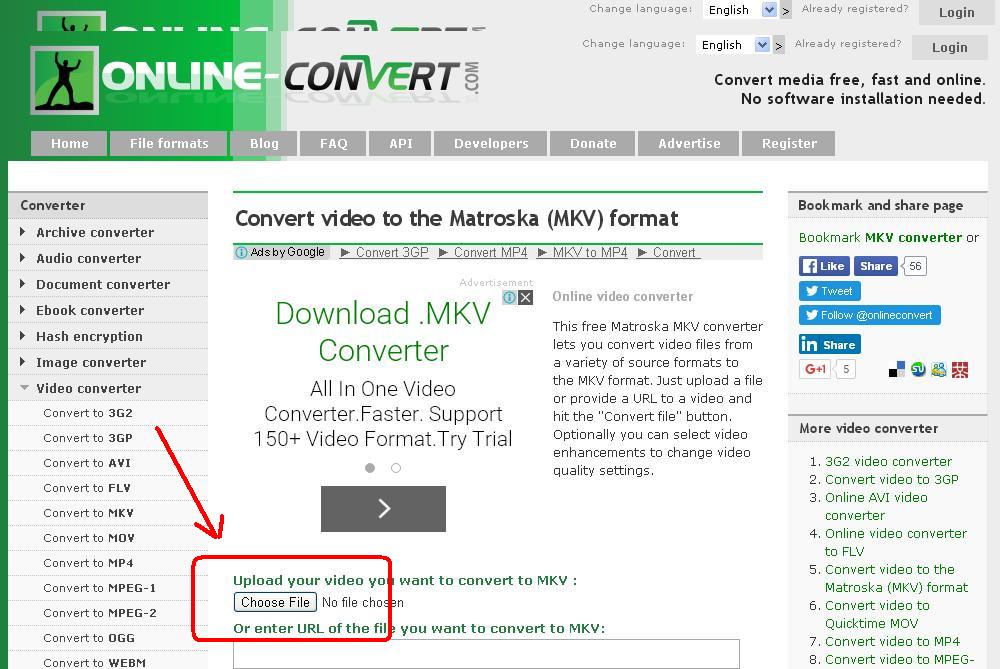Everything You Need To Know About .MKV Files: A Complete Guide
Have you ever encountered a video file with the .mkv extension and wondered what it is? The answer is that you've stumbled upon a powerful and versatile multimedia container, capable of holding a wealth of digital information in a single file, making it a favorite among movie and television enthusiasts.
At its core, an MKV file, short for Matroska Video, is a container format. Think of it like a digital filing cabinet. It doesn't dictate what the contents are, but rather how they are organized and stored. Within this "cabinet," you might find a high-definition video stream (perhaps encoded with H.264 or another codec), accompanying audio tracks (such as MP3 or AAC), subtitles in various languages (like SRT or USF), and even chapters or metadata. This ability to house diverse elements within a single file is one of the key reasons for MKV's popularity.
| Feature | Description |
|---|---|
| File Extension | .mkv |
| Full Name | Matroska Multimedia Container |
| Type | Multimedia Container Format (Video Container) |
| Primary Use | Storing movies, TV shows, and other multimedia content |
| Key Features | Supports multiple audio tracks, subtitle tracks, video codecs, and metadata |
| Open Standard | Yes, Matroska is a free and open standard |
| Codecs Supported | Wide range of video and audio codecs, including but not limited to H.264, VP9, MP3, AAC, AC3 |
| Subtitle Support | SRT, SSA, USF, VobSub, and more |
| Compared to Other Containers | Similar to AVI or MP4, but with more flexibility and wider codec support |
| Origin | Derived from the Russian word for "nesting doll," reflecting its ability to contain multiple files within a single unit |
For more detailed technical specifications, you can refer to the official Matroska website: https://www.matroska.org/
The genesis of the MKV format lies in its open-source nature and the desire to create a more flexible and capable container than existing options like AVI. While AVI has long been a staple, MKV offers significant advantages, primarily in its ability to accommodate a much wider range of audio and video codecs. This means greater compatibility across different media players and less need for transcoding, the process of converting video from one format to another.
One of the core strengths of the MKV format is its flexibility. It's not tied to a specific codec, meaning it can support a diverse range of video and audio compression methods. This is in stark contrast to some other formats that might have limitations. As technology evolves and new codecs emerge, MKV is well-positioned to adapt. You might find MKV files containing H.265 (HEVC) video, a modern codec offering superior compression, alongside older standards like MPEG-4. Similarly, the audio can vary widely, with options including MP3, AAC, AC3, DTS, and more.
Furthermore, MKV excels at handling multiple audio tracks and subtitles. Imagine watching a movie with both the original English soundtrack and a Spanish dub, along with subtitles in French and German. An MKV file can seamlessly accommodate all of these elements, allowing you to switch between them with ease. This makes it an ideal format for international releases and for providing accessibility options.
The versatility extends to subtitle formats. Beyond the common SRT (SubRip) files, MKV can support SSA (SubStation Alpha), USF (Universal Subtitle Format), and VobSub subtitles (often extracted from DVD discs). This broader support enhances the viewing experience and ensures compatibility across various subtitle styles and features.
The "container" aspect of an MKV file is crucial to understand. The file itself does not encode the video or audio. Instead, it holds the encoded streams, along with the metadata that describes them (language, resolution, aspect ratio, etc.). When you play an MKV file, your media player reads the container and, using the appropriate codecs, decodes and presents the video and audio. The necessary codecs must be present on your system or be installed by the media player.
Consider a scenario: you're trying to play an MKV file, but your default media player, for example, Windows Media Player, is unable to do so. This doesn't necessarily mean the file is corrupt. More often, it means your player lacks the specific codecs required to decode the video or audio streams within that particular MKV file. A simple solution is often to install a codec pack, like the K-Lite Codec Pack, which bundles a wide variety of codecs, enabling your player to handle a broader range of formats. Popular media players like VLC, Kodi, and PotPlayer have built-in support for MKV and many codecs.
The design of Matroska is based on Extensible Binary Meta Language (EBML), a binary format that's designed to be flexible and extensible. This makes it easy to add new features and capabilities to the format in the future, and helps explain its longevity and continued relevance. The EBML foundation is also the reason why MKV files can hold so much information and handle multiple tracks so effortlessly.
The comparison to other popular container formats is inevitable. AVI (Audio Video Interleave) has been around for a long time, but it's older and less flexible. MP4 (MPEG-4 Part 14) is widely used, particularly for online video and streaming, but MKV often offers better support for multiple tracks and a wider range of codecs. Advanced Systems Format (ASF) is another container, often associated with Windows Media. Each has its strengths, but MKV's open nature and versatility often make it the preferred choice for archiving and distributing movies and TV shows.
There are numerous software applications designed to work with MKV files. These range from simple media players to sophisticated editing tools. Programs such as VLC Media Player and Kodi are well-known for their broad support for MKV playback. If you want to create your own MKV files or modify existing ones, tools like MKVToolNix (a collection of command-line utilities) and MakeMKV are essential. These tools allow you to merge, split, remux, and otherwise manipulate the contents of your MKV files with considerable precision.
Creating MKV files involves using encoding tools that can combine various audio, video, and subtitle streams. Software like Handbrake, though primarily known for transcoding, can also create MKV files as output. MakeMKV, on the other hand, is specifically designed to extract video and audio streams from Blu-ray and DVD discs and package them into MKV containers, preserving the original quality.
When faced with a situation where a video file won't play, it's essential to consider the file type. Is it a standard MP4, or an obscure format like MKV? The latter can be a bit trickier, because it is a container, and not a codec. Checking the file extension in this case, .mkv will usually point to the source of the issue. As mentioned, it's usually a matter of the media player not having the right codec. Codecs are programs that allow the media player to decode and play the audio or video streams. Installing a codec pack can often solve the problem.
For those looking to play MKV files online using web browsers like Mozilla Firefox or Google Chrome, compatibility becomes a key factor. While modern HTML5 implementations offer improved support for various video formats, ensuring that the video codec used is supported by the browser is vital. While some container formats, such as MP4, are widely supported, it can be a bit more complex to achieve compatibility with MKV files, particularly if a less common video or audio codec is included. The use of standard codecs, like H.264 video and AAC audio, significantly increases the likelihood of successful playback.
It is a video container format that supports multiple audio and subtitle tracks within the same file. This capability brings MKV up to par with other common file formats, making it a versatile choice for digital media. The inclusion of support for various subtitle formats, such as SRT, SSA, and USF, further enhances its utility.
In summary, MKV is a powerful and versatile container format that has become a staple for storing and distributing high-quality multimedia content. Its flexibility in supporting various codecs, its capacity for multiple audio and subtitle tracks, and its open-source nature have solidified its place as a leading choice for movie and TV show enthusiasts worldwide. So, the next time you encounter an .mkv file, you'll know you're dealing with a format designed to offer a rich and adaptable multimedia experience.
:max_bytes(150000):strip_icc()/mkv-files-58da69af3df78c51625b11fc.png)

